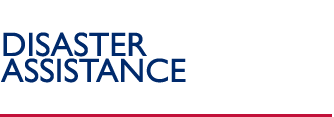Liberia - Complex Emergency

|
| Map of Liberia |
Regional Team: SWAN
Southern, Western and Northern Africa
Disaster Declared: 10/1/2003
Brief Description: From 1989 to 2003, Liberia experienced intermittent civil war as rival factions fought for control of the country. By the summer of 2003, the conflict reached a peak with two opposition groups, Liberians United for Reconciliation and Democracy (LURD) and the Movement for Democracy in Liberia (MODEL), controlling the majority of the country. President Charles Taylor resigned, amidst intense international pressure, on August 11, 2003. Soon after, representatives of the Government of Liberia, LURD, and MODEL signed a peace agreement allowing for a transitional government to assume power on October 14, 2003. The National Transitional Government of Liberia (NTGL) will remain in office until the election of a new government in October 2005. On October 1, 2003, the U.N. established the United Nations Mission to Liberia (UNMIL), which reached full strength with 15,000 peacekeeping troops in May 2004.
Despite these political developments, attacks on civilians and years of conflict produced widespread human suffering in Liberia, the longstanding internal displacement of approximately 500,000 of the country's 3 million inhabitants, and the flight of hundreds of thousands of refugees to neighboring countries. The disarmament, demobilization, rehabilitation, and reintegration (DDRR) of the approximately 60,000 former combatants in Liberia was a main focus of UNMIL in the immediate aftermath of the conflict. The DDRR program also targeted an estimated 21,000 child soldiers in Liberia. Providing assistance to displaced persons and refugees living in camps and communities, ex-combatants in the DDRR cantonment sites, and populations beginning to return to areas of origin presented significant challenges to the humanitarian community throughout FY 2004.
FY2004
- 08-27-2004 Situation Report #14[Liberia](132kb
PDF)(map)
- 05-21-2004 Situation Report #13[Liberia](73kb
PDF)(map)
- 04-01-2004 Situation Report #12[Liberia](114kb
PDF)(map)
- 02-03-2004 Situation Repor t#11[Liberia](144kb
PDF)(map)
- 01-09-2004 Situation Report #10[Liberia](101kb
PDF)(map)
- 12-18-2003 Situation Report #9 [Liberia] (102kb
PDF)(map)
- 12-04-2003 Situation Report #8 [Liberia] (103kb
PDF)
- 11-20-2003 Situation Report #7 [Liberia] (113kb
PDF)
- 11-05-2003 Situation Report #6 [Liberia] (121kb
PDF)(map)
- 10-29-2003 Situation Report #5 [Liberia] (122kb
PDF)
- 10-22-2003 Situation Report #4 [Liberia] (120kb
PDF)
- 10-15-2003 Situation Report #3 [Liberia] (115kb
PDF)
- 10-08-2003 Situation Report #2 [Liberia] (116kb
PDF)
- 10-01-2003 Situation Report #1 [Liberia] (115kb
PDF)
Back to Top ^
|


